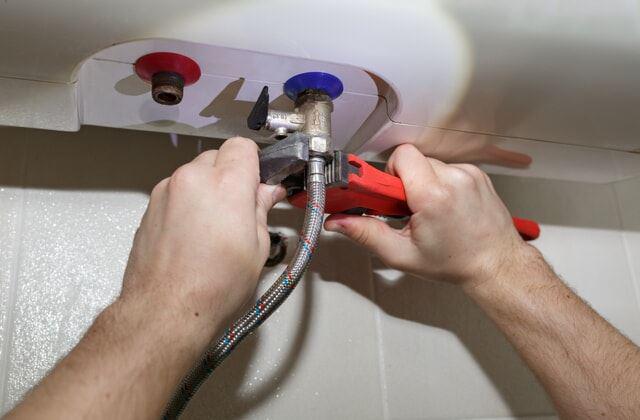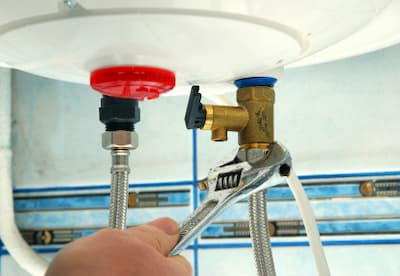Key Tips on Maintaining Your Home's Hot Water System
Key Tips on Maintaining Your Home's Hot Water System
Blog Article
In this article below you can find lots of professional tips in regards to Water Heater Maintenance Tips You Can't Afford to Forget.

Warm water is important for daily convenience, whether it's for a rejuvenating shower or cleaning meals. To ensure your warm water system runs efficiently and lasts longer, normal maintenance is key. This article gives functional ideas and insights on just how to preserve your home's hot water system to stay clear of interruptions and costly fixings.
Intro
Preserving your home's warm water system may appear overwhelming, however with a few simple actions, you can ensure it runs smoothly for many years to come. This overview covers everything from understanding your warm water system to DIY upkeep tips and recognizing when to employ professional help.
Significance of Keeping Your Hot Water System
Routine maintenance not just extends the life expectancy of your hot water system but likewise guarantees it operates effectively. Neglecting maintenance can bring about lowered efficiency, greater power expenses, and also premature failing of the system.
Indications Your Warm Water System Needs Maintenance
Recognizing when your hot water system needs focus can prevent significant issues. Watch out for signs such as inconsistent water temperature level, strange noises from the heating unit, or rusty water.
Comprehending Your Warm Water System
Before diving into upkeep jobs, it's useful to understand the fundamental parts of your hot water system. Usually, this consists of the water heater itself, pipes, anode poles, and temperature controls.
Regular Monthly Upkeep Tasks
Normal monthly checks can help capture small issues prior to they rise.
Purging the Hot Water Heater
Flushing your water heater removes sediment build-up, improving performance and lengthening its life.
Checking and Replacing Anode Rods
Anode rods avoid rust inside the storage tank. Inspecting and changing them when worn is crucial.
Examining and Readjusting Temperature Level Settings
Adjusting the temperature level setups makes certain ideal performance and security.
Do It Yourself Tips for Maintenance
You can carry out numerous maintenance tasks yourself to keep your warm water system in top condition.
Checking for Leaks
Consistently check pipelines and connections for leakages, as these can cause water damage and greater costs.
Examining Stress Alleviation Valves
Testing the pressure safety valve guarantees it works correctly and protects against extreme stress accumulation.
Protecting Pipelines
Protecting hot water pipes minimizes warm loss and can save energy.
When to Call a Specialist
While DIY maintenance is valuable, some concerns require expert know-how.
Complicated Concerns Calling For Specialist Aid
Instances include major leaks, electric issues, or if your water heater is consistently underperforming.
Routine Expert Maintenance Advantages
Specialist upkeep can consist of detailed inspections, tune-ups, and ensuring compliance with safety criteria.
Final thought
Routine maintenance of your home's hot water system is essential for efficiency, longevity, and cost savings. By complying with these suggestions and recognizing when to look for expert aid, you can ensure a reputable supply of hot water without unanticipated interruptions.
Water Heater Maintenance: The Basics
Maintaining your water heater will ensure it operates efficiently and has a longer lifespan. Neglecting regular maintenance can lead to costly repairs and an even bigger chunk of your savings if you have to replace it sooner than necessary. But there’s good news: Most water heater maintenance tasks are relatively simple and easy for homeowners with basic DIY skills.
Flush the Water Heater
Over time, sediment and minerals can build up in the tank, reducing its efficiency and potentially causing damage. To flush the tank, turn off the power or gas supply, attach a hose to the drain valve near the bottom and open the valve to drain the water until it runs clear. Ideally, flush the tank annually.
Replace the Anode Rod
The anode rod is a sacrificial metal rod that helps prevent corrosion inside the tank. Inspect and replace it every three to five years or per the manufacturer's recommendation. To replace the anode rod, turn off the power or gas supply, drain a few gallons of water from the tank, unscrew the old rod and replace it with a new one. If the anode rod is significantly corroded or covered in calcium buildup, it's a sign the water heater may need to be replaced soon.
Tune-Up
A yearly tune-up can help identify potential issues and ensure your water heater operates at peak efficiency. This typically involves checking the thermostat, burner assembly (for gas heaters) and any other components specified by the manufacturer. During a tune-up, the technician may also clean the burner and adjust the pilot light (for gas heaters) or examine the heating elements (for electric heaters).
How to Maintain Your Water Heater
Insulate the tank. Insulating the tank can improve energy efficiency and reduce heat loss, saving you money on energy bills. You can purchase precut insulation blankets designed specifically for water heaters or use standard fiberglass insulation wrapped securely around the tank. Check the temperature. The recommended water temperature for most households is around 120 degrees Fahrenheit (49 degrees Celsius). Higher temperatures can increase energy costs and potentially cause scalding. Use a kitchen thermometer to check the temperature at the faucet nearest the water heater. Monitor water pressure. Excessive water pressure can strain the water heater and cause leaks or even tank failure. Install a pressure-reducing valve if necessary. The ideal water pressure range is between 60 and 70 PSI (pounds per square inch). Test the temperature and pressure (T&P) relief valve. The T&P relief valve is a safety feature that releases pressure if the tank gets too hot or the pressure builds up too high. Test it annually by lifting the lever and allowing a small amount of water to release. Replace the valve if it doesn't release water or reseal properly. Check for leaks. Regularly inspect the tank, pipes and fittings for leaks or corrosion. Deal with issues promptly to prevent further damage. Even a small leak can lead to significant water damage over time. Consider a tankless water heater. If your traditional tank-style water heater is nearing the end of its lifespan ( typically 10 years), consider replacing it with a tankless water heater. These units heat water on demand, reducing standby energy losses and potentially saving you money on your energy bills. Schedule professional maintenance. While homeowners can perform many water heater maintenance tasks, it's still a good idea to schedule professional maintenance every few years. A plumber or HVAC technician can thoroughly inspect the unit, identify potential issues and ensure it operates safely and efficiently. https://www.homeserve.com/en-us/blog/home-improvement/hot-water-heater-maintanence/

I stumbled upon that content about How to Maintain a Hot Water Heater in a Few Simple Steps while looking around the search engines. Do you know somebody who is excited about the topic? Feel free to promote it. We treasure your readership.
Course Detail Report this page